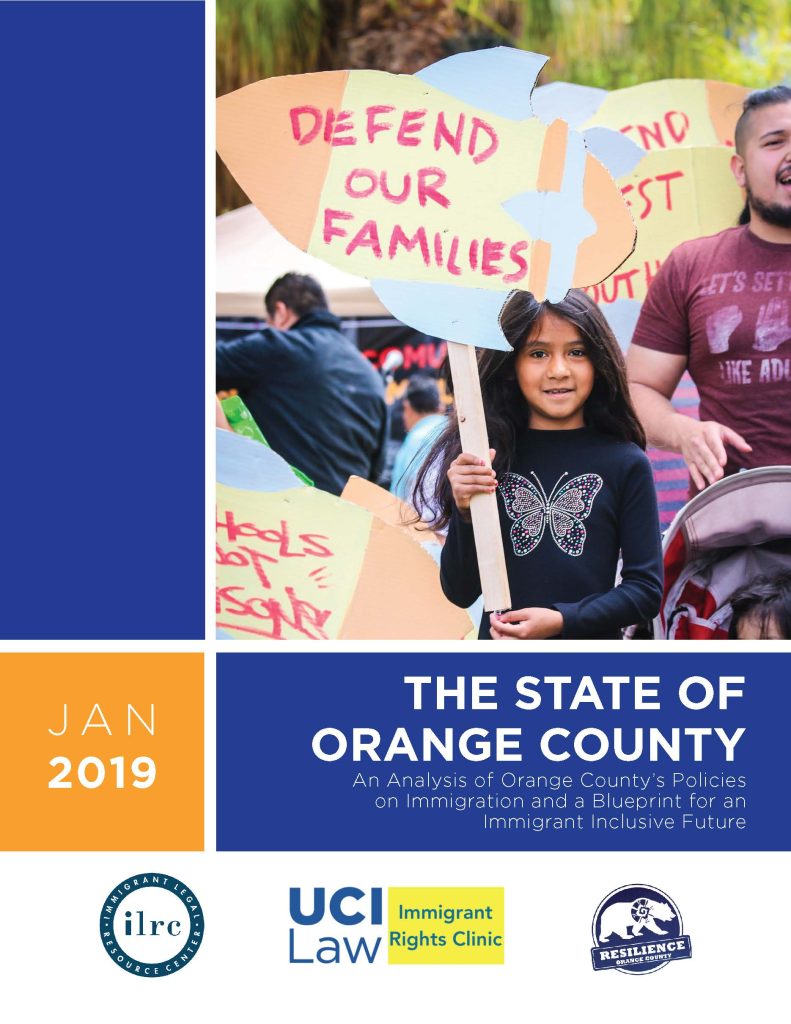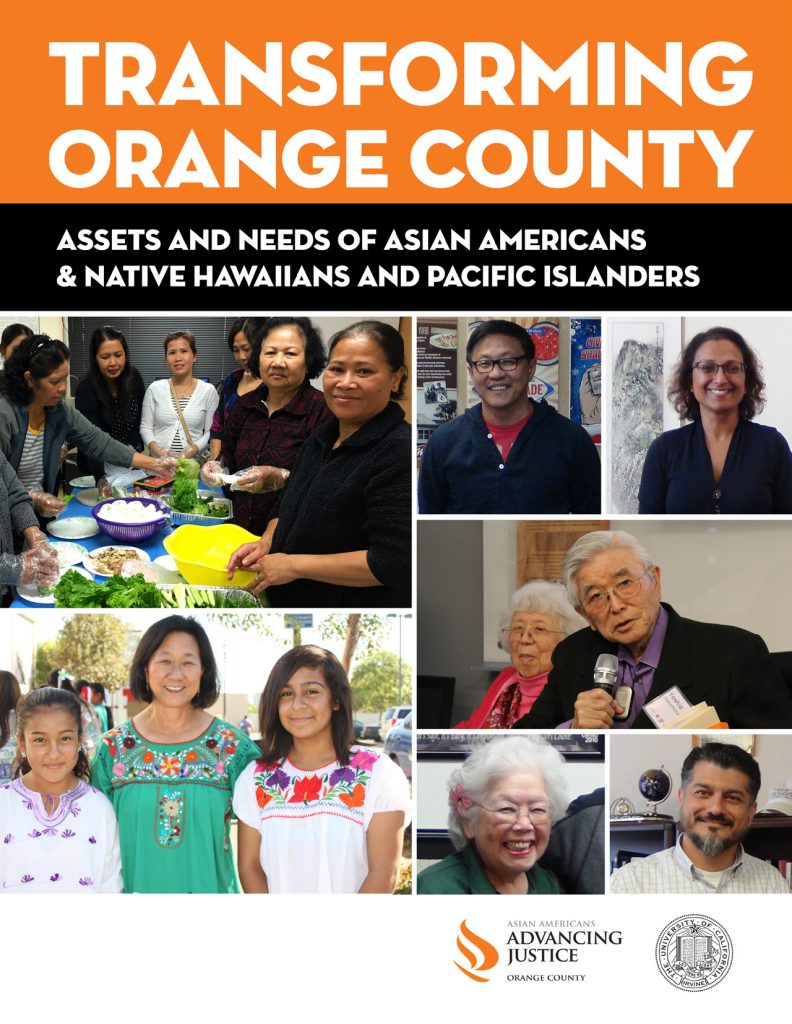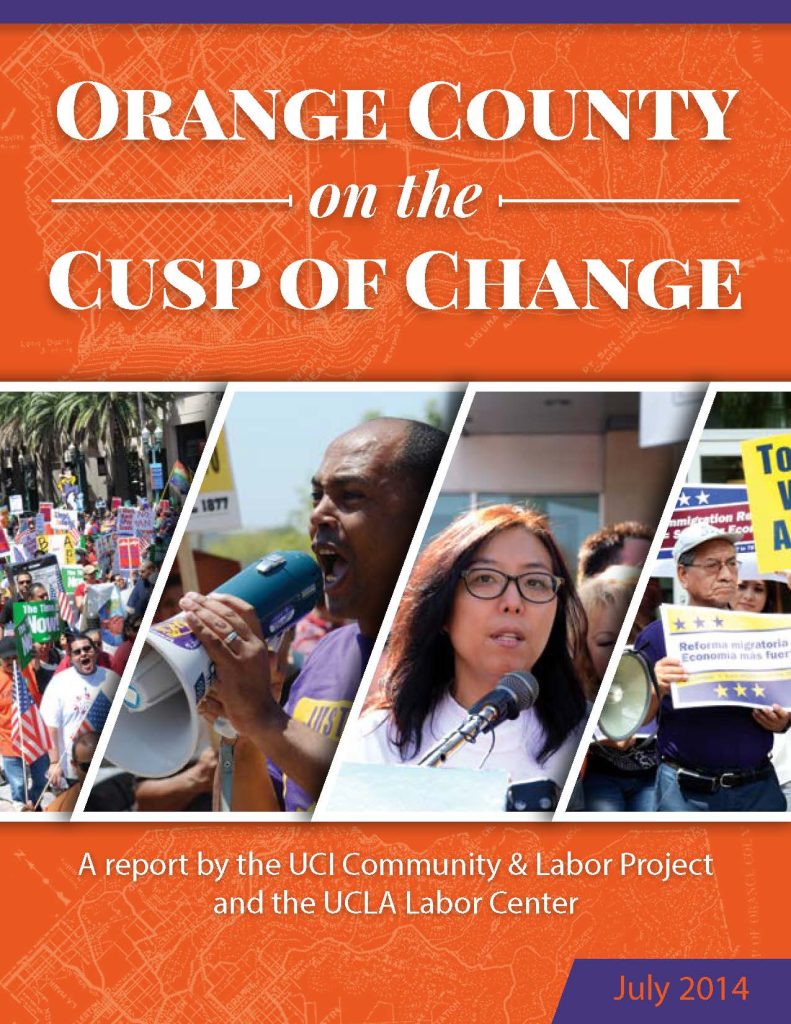
The State of Orange County
Resilience OC, the UCI Law School Immigrant Rights Clinic and the Immigrant Legal Resource Center released a report that outlines the state of immigration enforcement in Orange County. The report contains a first look at data about the impacts of the county’s immigration policies and places local officials’ entanglement with federal immigration enforcement efforts in the context of the county’s anti-immigrant legacy. It lays out a set of questions and demands for local elected officials to guide them towards a more inclusive future in which all immigrant communities are protected and treated with fairness and dignity.

Transforming Orange County
Orange County—the third-most populous county in California and the sixth-most populous in the United States—exemplifies the major demographic shifts sweeping the nation. These shifts have transformed this predominantly homogenous, White, and suburban county into one that is highly diverse and urbanizing, where Asian Americans & Native Hawaiians and Pacific Islanders (AA&NHPI) now comprise 21% of the county’s 3 million residents. With nearly 600,000 Asian Americans and over 19,000 Native Hawaiians and Pacific Islanders (NHPI), Orange County is home to the nation’s third- largest AA&NHPI population.
Produced by Asian Americans Advancing Justice – Orange County in 2018.

Orange County on the Cusp of Change
Once a rural, agricultural region, Orange County has become a vibrant, diverse metropolitan area. Though Orange County has been changing demographically and politically for the past four decades, its common reputation continues to be one of conservatism, right wing activism, homogeneity and affluence. Although it was once the land of Richard Nixon, the John Birch Society, and per Ronald Reagan, “the place where all good Republicans go to die,” the reality is that Orange County is increasingly more heterogeneous and politically diverse. Yet a dominant narrative of wealth and affluence in the county obscures the existing inequality, which varies from city to city and leads to economic and social disparities among residents.
This report aims to understand the key challenges residents of today’s Orange County face. The research is primarily comprised of secondary data including academic research, policy reports, indicator studies, newspaper articles, and government and voting data. In addition, the research process included community forums where community leaders helped shape the analysis of the data.
The following are key findings based on the research:
- Job growth in low-wage industries will increase economic disparity.
- High cost of living and economic inequality spread across the county.
- Environmental issues impact low-income neighborhoods and communities of color more acutely.
- People of color are the new majority in Orange County, but disproportionately face issues such as poverty, language isolation, and educational attainment challenges.
- Orange County is seeing dramatic political changes, but political systems pose barriers to participation for low-income and communities of color.
Produced by the UCI Community & Labor Project and the UCLA Labor Center – Saba Waheed, Hugo Romero and Carolina Sarmiento in 2014.

A Community of Contrasts
Produced by Asian Americans Advancing Justice in partnership with the Orange County Asian and Pacific Islander Community Alliance (OCAPICA) in 2014, A Community of Contrasts: Asian Americans, Native Hawaiians and Pacific Islanders in Orange County compiles critical data to paint a more nuanced picture of the county’s Asian American and Pacific Islander communities.
Orange County is home to the third-largest Asian American population in the United States. According to the 2010 Census, there are nearly 600,000 Asian Americans and over 19,000 Native Hawaiians and Pacific Islanders (NHPI) living in Orange County; only Los Angeles and Santa Clara Counties are home to more Asian Americans nationwide. One out of every five residents countywide is Asian American or NHPI. Between 2000 and 2010, Asian American and NHPI populations in Orange County grew 41% and 17%, respectively, faster than any other racial groups. In contrast, the county’s total population grew only 6% over the same period. The Asian American population grew in every city countywide over the decade.
